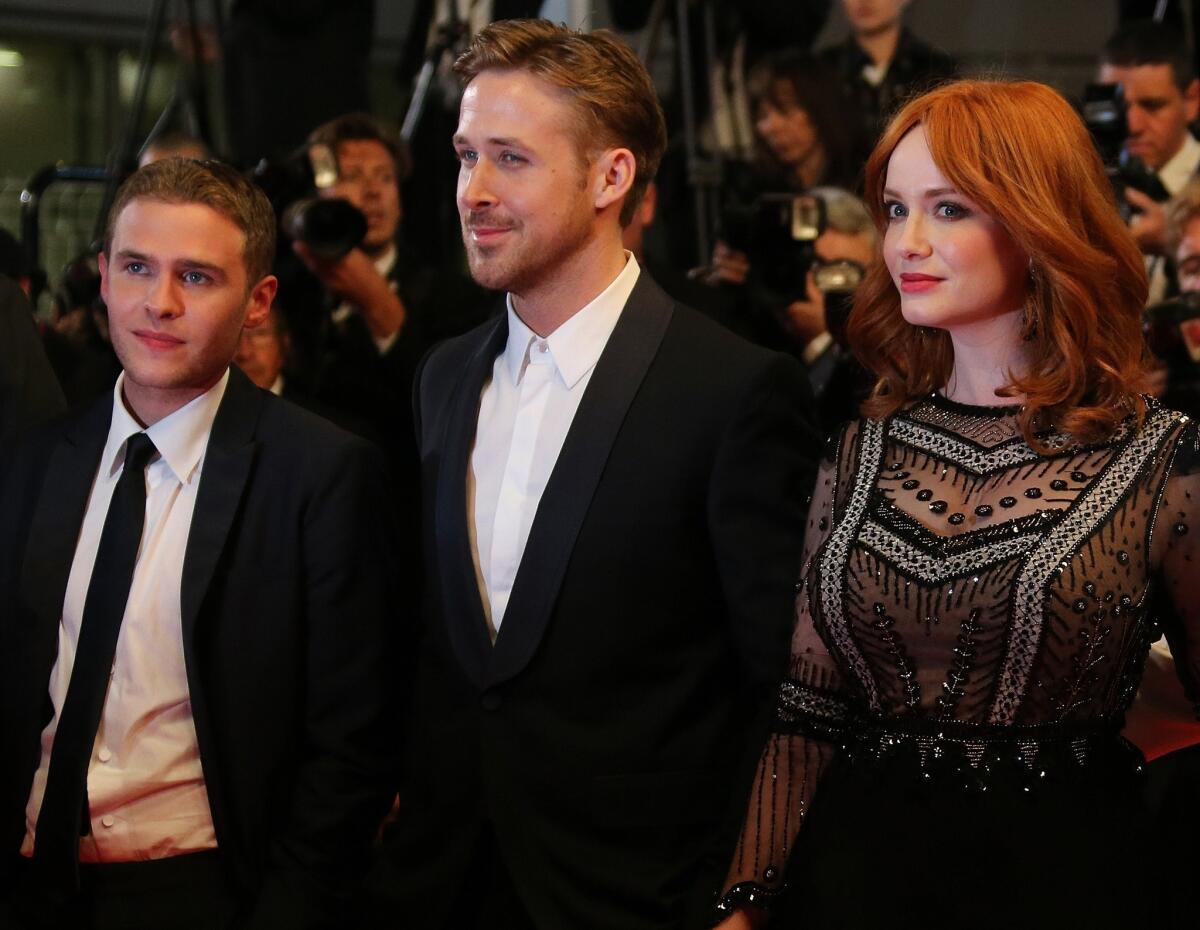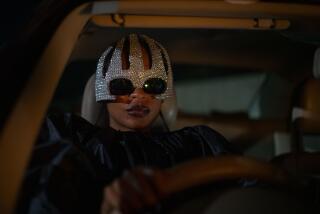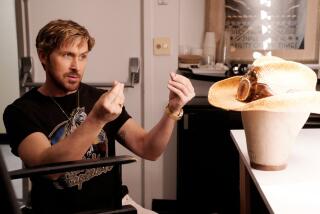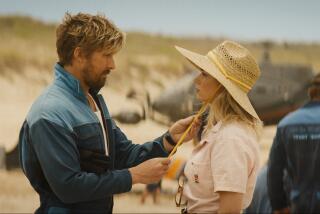Cannes 2014: The bafflement of Ryan Gosling’s ‘Lost River’

- Share via
Reporting from Cannes, France — Ryan Gosling’s directorial debut, “Lost River,” premiered Tuesday at the Cannes Film Festival, and as you may have heard, it prompted no shortage of head-scratching and confusion.
The movie itself is a puzzler. A single mother (Christina Hendricks) lives in a thinly veiled Detroit called Lost River, struggling to make ends meets as her house faces foreclosure (underwater double entendres likely intended) and demolition. She and her two children have few prospects.
What follows is a trip into the surreal, prompted in part by a well-meaning neighbor (Saoirse Ronan). The plot never moves with any particular velocity, and the kind of telling character moments that would come in its place are instead swapped for a series of surreal images, influenced by the likes of David Lynch and Nicolas Winding Refn. Bicycles and houses go up in flames; nightclubs are populated by psychedelic creations. Portentous music often plays over it all.
There are moments that have a kind of cool-cinema chic, but they never coalesce into anything larger. Even by the standards of Impressionistic video art, the film feels highly disjointed.
But the bafflement isn’t limited to the movie itself.
First, it’s unclear what Gosling is after, careerwise, and, maybe more important, what effect this will have on his standing. His fans remain loyal, and the sight outside the premiere Tuesday night of several young devotees trying to defend, or at least understand, the film had a certain poignance. (In the theater, a hard-core group hung in and gave him the customary long ovation, which he accepted with Cannes-standard waving and graciousness.)
And it’s unlikely many of his fans will see the film anyway; after all, it’s not only a challenging art house film but also one in which he doesn’t appear.
But with this confounding choice — the latest in a series of them — one wonders how much longer fans will continue to worship Gosling as they have, building memes and following the details of the personal life for a star who has largely been removed from the ranks of mainstream cinema. In the short term this creates mystery; in the long term it can breed indifference.
There is precedent for an actor doing his wacky own thing and continuing to attract a following (James Franco, anyone?), but personalities like that usually engage with fans in other ways, social media and the like, and Gosling shuns much of that.
A return to acting would of course help. He’d need to do something populist, or at least well-regarded. Gosling may not need another “The Notebook,” but a “Blue Valentine” wouldn’t hurt. You can challenge fans for only so long before nostalgia gives way to impatience.
The press strategy at the festival has been strange too. Ryan Gosling’s best weapon is Ryan Gosling, his charming, forthcoming self often winning over reporters. But Gosling was little found on the fest’s well-trod media circuit; he declined most if not all U.S. interviews, including a request from this paper. If the goal was to draw less attention to the film and avoid the hot seat for it, it worked. Unfortunately, in the process he also missed an opportunity to finesse some of the journalists now dissing the film, and who could also help build word of mouth at time of release.
Which brings us to the biggest question: Where does Warner Bros. go from here?
The studio, which boarded the project at an earlier development stage but gave Gosling a great degree of autonomy, has to decide when it will go, and how big. It’s hardly an easy question. Trying to market the film would vex even the most savvy team (and Warners has one). A platform release is probably the best approach, but can the studio go so narrow and risk offending such a prized relationship? And even if it does, will the niche box office that results hurt, not to put too fine a point on it, one of its more valuable brands?
First features, especially those made with a lot of independence, can yield some complicated images on the screen. But that’s nothing compared with what’s created off it.
More to Read
Only good movies
Get the Indie Focus newsletter, Mark Olsen's weekly guide to the world of cinema.
You may occasionally receive promotional content from the Los Angeles Times.








